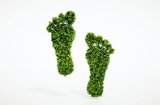Ecological succession stages
 Succession allows living things to occupy an area that was once barren.
Succession allows living things to occupy an area that was once barren.
Images
by Contributing Writer
An area once devoid of life teems with living things following the process of succession. Glaciers, giant masses of ice, leave in their wake practically sterile land. Over time, various species take up residence in this region in a predictable manner. Primary succession describes a series of events in which successive species colonize a once-barren land, such as one left behind when glaciers retreat. Each successive community or seral stage is defined by a change in landscape and the appearance of new species.
History of the Glaciers
From the 1600s to the 1800s, Earth experienced what scientists call a "Little Ice Age" in which glaciers advanced on land previously uninhabited by ice. About 200 years ago, the glaciers started melting, which scientists call "glacial retreat." With the retreat of the glaciers, ridges of rock and debris called moraines remained. This moraine is little more than bare rock, and no plant life can exist on it until ecological succession begins. Succession that takes place in the wake of glacier retreat follows the stages of primary succession, the same process responsible for the development of life where there once was none, such as in lakes and on new islands.
The First Colonizers
Glaciers leave behind barren rocks, and no soil exists to support any kind of life. The first species that arrive on this barren land left behind by glaciers are the pioneer species. These species stabilize and enrich the soil, paving the way for plants to exist. Succession usually starts with lichen, an association of algae and fungi. Lichen grows on the bare rock left behind by glaciers. Acids produced by the lichens cause the rock to crack, making room for pieces of rock and dust to accumulate in the spaces. These pieces of rock and dust form the first soil.
After the colonization of the lichen, plant life begins to gather at the site. Plants are the producers of a community of organisms, using natural resources such as sunlight, carbon dioxide and water to provide food for itself and the rest of the community. The very first plants are the very small — but very essential — mosses. Animals such as insects follow these mosses. These small animals then leave behind their waste products, which act as fertilizer for the new soil, making it even richer for other plants and animals to arrive.
|
Is your lunch causing global warming? Cars and factories are major sources of greenhouse gas emissions that are heating up the planet. But what you ... An article from: New York Times Upfront Book (Scholastic, Inc.) |

|
Wallmonkeys Ecological Footprint Symbol Peel and Stick Wall Decals (24 in W x 16 in H) Home (Wallmonkeys)
|